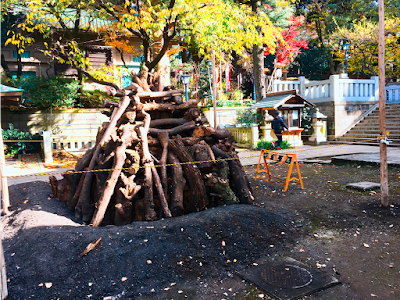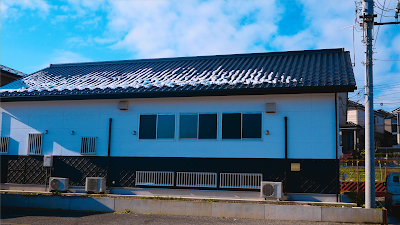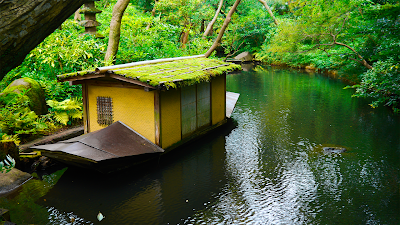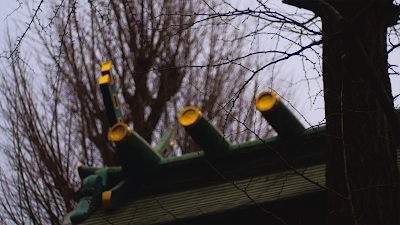Evade Without Evading: Bujinkan Strategies of Control Part 4
From Bujinkan Santa Monica by Michael
 |
| 五條天神社で、お焚き上げ otakiage preparations at Gojoten jinja. photo Michael Glenn |
“This is a way to control. You’ve got to be a shadow. He won’t believe that I’m avoiding.“The next day I ran some errands in Tokyo. The local shrines were already beginning their new year’s preparations. I stopped and stared at a pile of wood that was made ready for the お焚き上げ otakiage bonfire. Fire can purify and burn away problems from the previous year.
I kept thinking about what happened in yesterday’s class with Soke. How did he disappear? That was what I was stuck on.
I thought, next time I get that chance, I am going to really try to hit him and see what happens. If anything goes wrong, the year is almost over and I can throw myself into the fire.
In Hatsumi Sensei’s next class, he asked me to punch at him. I decided this time I would go for it! I really tried and he disappeared. Then I was kind of hanging there in space. I felt a finger (I think it was his thumb) very light on the back of my hand. And somehow this threw me. He said,
“This muto dori feeling is very important. One finger. Just kind of pass by. This way of moving through the kukan is important.”What Hatsumi Sensei was teaching was how to control. I discovered much later that this type of control arises neither by evading or NOT evading. It is hidden in between.
Hatsumi Sensei told us over and over, “Yokeru yokenai!” This is getting out of the way without getting out of the way. Not evading while evading.
This is hard to understand. Obviously you don’t want to get hit by your opponent. If you can’t evade or stand still, then what?
Hatsumi Sensei gave us a clue when he said “人間の意識からない ningen no ishiki kara nai.” Don’t do it with your own human intention.
That is the problem with evading. The human intention or thought takes too long. Soke said, “I'm not avoiding. Not thinking.”
This creates a special kind of distance that is connected to nature. It is not something that you came up with yourself. If you're trying to get out of the way, then you won't be able to control anything because you are preoccupied.
You don’t want to get hit, or cut by the weapon. But if you try to evade, or try NOT to evade, you will fail. No matter how good you are. There is always someone better, faster, sneakier. So the answer lies in between evading and not evading.
What is in between? Connection and zero. This has long been how Soke describes his budo,
“You control him like this. This is the theme. Connect these ideas. It becomes zero. Connecting zero.”You can find the middle way between evading and not evading by merging with this universal space (Hatsumi Sensei said shizento and uchuuto). Then he called it a 玉 gyoku or egg ( I don’t know what that means, but if you do, please contact me).
Your whole body becomes like the mist. I wouldn’t believe any of this, except I tried to hit Soke and that is what happened. I have been holding onto that feeling ever since.
In my own training I have discovered that in the moment you evade, you break the connection and become trapped in your efforts to evade. You escape this through play. Play sets you free. Hatsumi Sensei described it,
“This is the idea of freedom. This is the strength of freedom. The power of freedom. Because it's very wide, it's very vast (宇宙 uchuu). You want to go up into space.”The flames from the bonfire rise above the shrine, sending sparks past the 鳥居 torii, and up among the stars. I would burn with them. There I learn the freedom of this distance.
UP NEXT: A Pattern 荒む Growing Wild: Bujinkan Strategies of control Part 5







